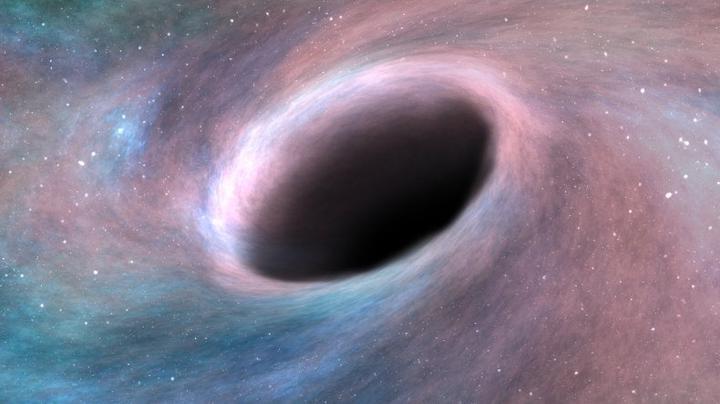Science_Hightech — operanewsapp.



Great ape animal studies have long been prohibited in Europe due to ethical concerns. An alternative to using animals in studies is the use of so-called organoids, which are three-dimensional cell structures that can be generated in the lab and are just a few millimeters in size.
These organoids can be created using pluripotent stem cells, which then subsequently develop into particular cell types like nerve cells. The study team was able to create both chimpanzee and human brain organoids by using this method.
“These brain organoids allowed us to investigate a central question concerning ARHGAP11B,” says Wieland Huttner of the Max Planck Institute of Molecular Cell Biology and Genetics, one of the three lead authors of the study.

Auroras set off spectacular light shows in the night sky, but they are also illuminating another reason the ozone layer is being eaten away.
Although humans are to blame for much of the ozone layer’s depletion, observations of a type of aurora known as an isolated proton aurora have revealed a cause of ozone depletion that comes from space: Charged particles in plasma belched out by solar flares and coronal mass ejections also keep gnawing at the ozone layer. Before now, the influence of these particles were only vaguely known.

Summary: A new 3D electrode array allows researchers to map the activity and location of up to 1 million synaptic links in a living brain.
Source: Rice University.
It’s a mystery how human thoughts and dreams emerge from electrical pulses in the brain’s estimated 100 trillion synapses, and Rice University neuroengineer Chong Xie dreams of changing that by creating a system that can record all the electrical activity in a living brain.

The collapse of Arecibo’s radio telescope was a devastating blow to the radio astronomy community. Issues began in 2017 for the nearly 55-year-old telescope when Hurricane Maria tore through Puerto Rico, shearing off one of the 29-meter (96-foot) antennas that was suspended above the telescope’s 305-meter (1,000-foot) dish, with falling debris puncturing the dish in several places.
In early 2020, earthquakes temporarily closed the observatory for safety reasons; then a succession of cable failures ultimately led to the December 2020 collapse of the 900-ton instrument platform suspended above the observatory, which crashed down on the iconic telescope’s giant dish. This collapse officially ended any possible hopes of refurbishing the famous observatory.
Since then, many have called for the telescope to be rebuilt or for building an even better replacement telescope at the site. Instead, the NSF wants Arecibo to serve as a hub for STEM education and outreach.
Just a quick vid. He mentions the hope of replacing current gene therapy with a pill or three which I heard Cynthia Kenyon say many years ago.
Dr David Sinclair talks about longevity genes, genes therapies and his works on resetting the eyes in this short clip.
David Sinclair is a professor in the Department of Genetics and co-director of the Paul F. Glenn Center for the Biology of Aging at Harvard Medical School, where he and his colleagues study sirtuins—protein-modifying enzymes that respond to changing NAD+ levels and to caloric restriction—as well as chromatin, energy metabolism, mitochondria, learning and memory, neurodegeneration, cancer, and cellular reprogramming.
Dr David Sinclair has suggested that aging is a disease—and that we may soon have the tools to put it into remission—and he has called for greater international attention to the social, economic and political and benefits of a world in which billions of people can live much longer and much healthier lives.
Dr David Sinclair is the co-founder of several biotechnology companies (Life Biosciences, Sirtris, Genocea, Cohbar, MetroBiotech, ArcBio, Liberty Biosecurity) and is on the boards of several others.
Elon Musk Reveals Secret DOJO Computer at Tesla AI Day.
#teslanews #teslaai #elonmusk.
During AI Day, the Tesla CEO was the first person to confirm the existence of the ‘Dojo’ program: “We do have a major program at Tesla which we don’t have enough time to talk about today called ” Dojo”. That’s a super powerful training computer. The goal of Dojo will be to be able to take in vast amounts of data and train at a video level and do massive unsupervised training of vast amounts of video with the Dojo program – or Dojo computer.”
In June 2020, Elon Musk tweeted, “Dojo, our training supercomputer, will be able to process vast amounts of video training data & efficiently run hyperspace arrays with an enormous number of parameters, plenty of memory & ultra-high bandwidth between cores.

The system autonomously ensures high interception accuracy while retaining a non-penetrating turret design.
US and French defense companies have unveiled the latest version of the RAPIDFire autonomous gun turret at the Euronaval 2022, a naval defense exhibition, in Paris.
The gun turret which is a joint effort of Nexter and Thales, is claimed to counter growing low-level, close-quarters surface and aerial threats, as per a press release published by the defense company Nexter on Wednesday.
The only way we can safeguard against this terrifying future is if nations collectively take action.
You might suppose Hollywood is good at predicting the future. Indeed, Robert Wallace, head of the CIA’s Office of Technical Service and the US equivalent of MI6’s fictional Q, has recounted how Russian spies would watch the latest Bond movie to see what technologies might be coming their way.
Hollywood’s continuing obsession with killer robots might therefore be of significant concern. The newest such movie is Apple TV’s forthcoming sex robot courtroom drama Dolly.
I never thought I’d write the phrase “sex robot courtroom drama”, but there you go.
Mikkelwilliam/iStock.
Todd Humphreys and his team at UT Austin’s Radionavigation Lab believed that the Starlink constellation could offer precise position, navigation, and timing that could serve as a backup to the army’s GPS system.